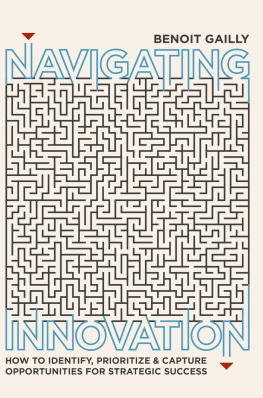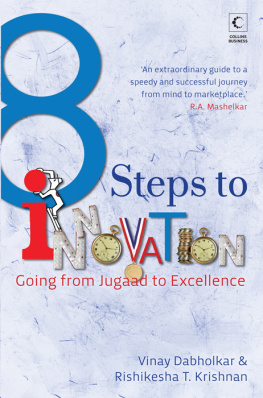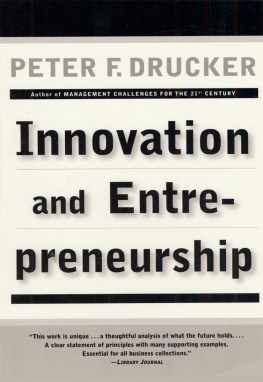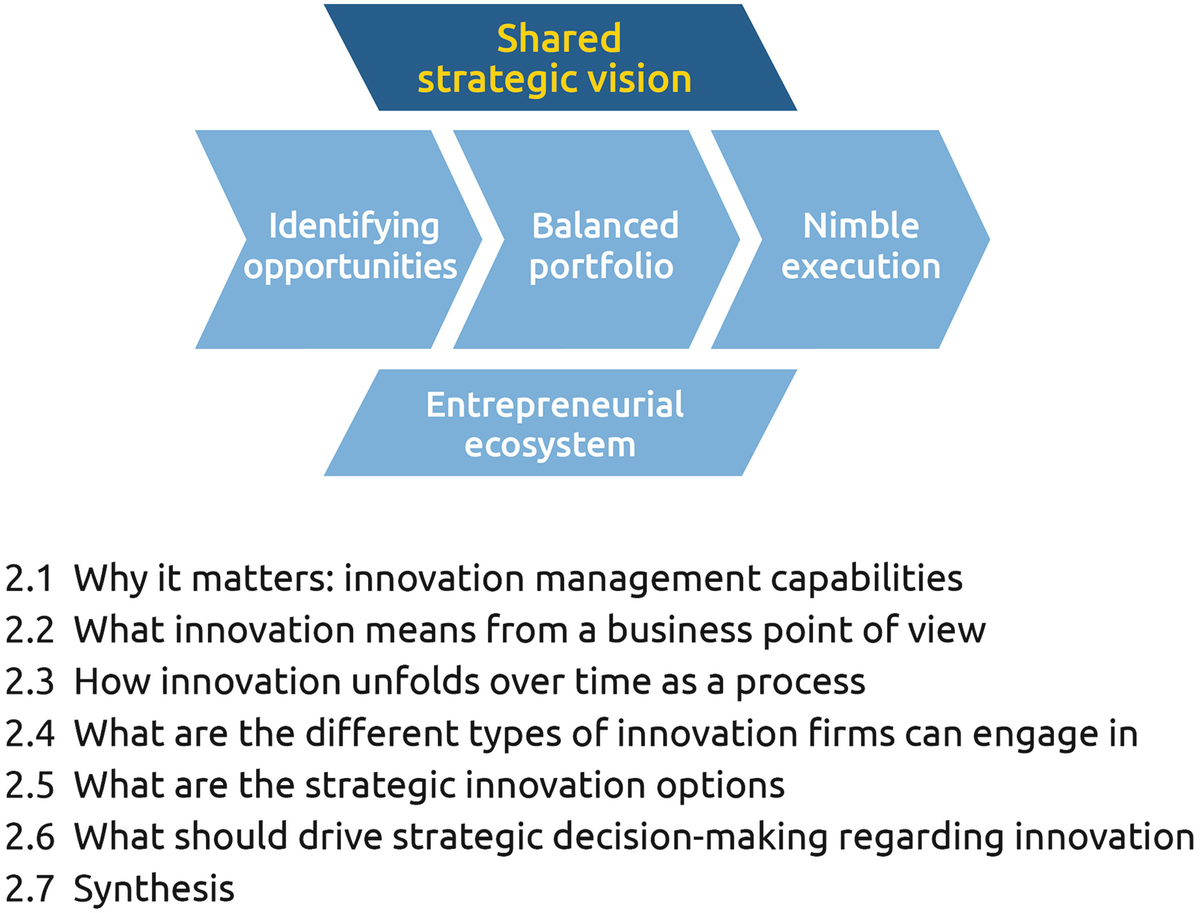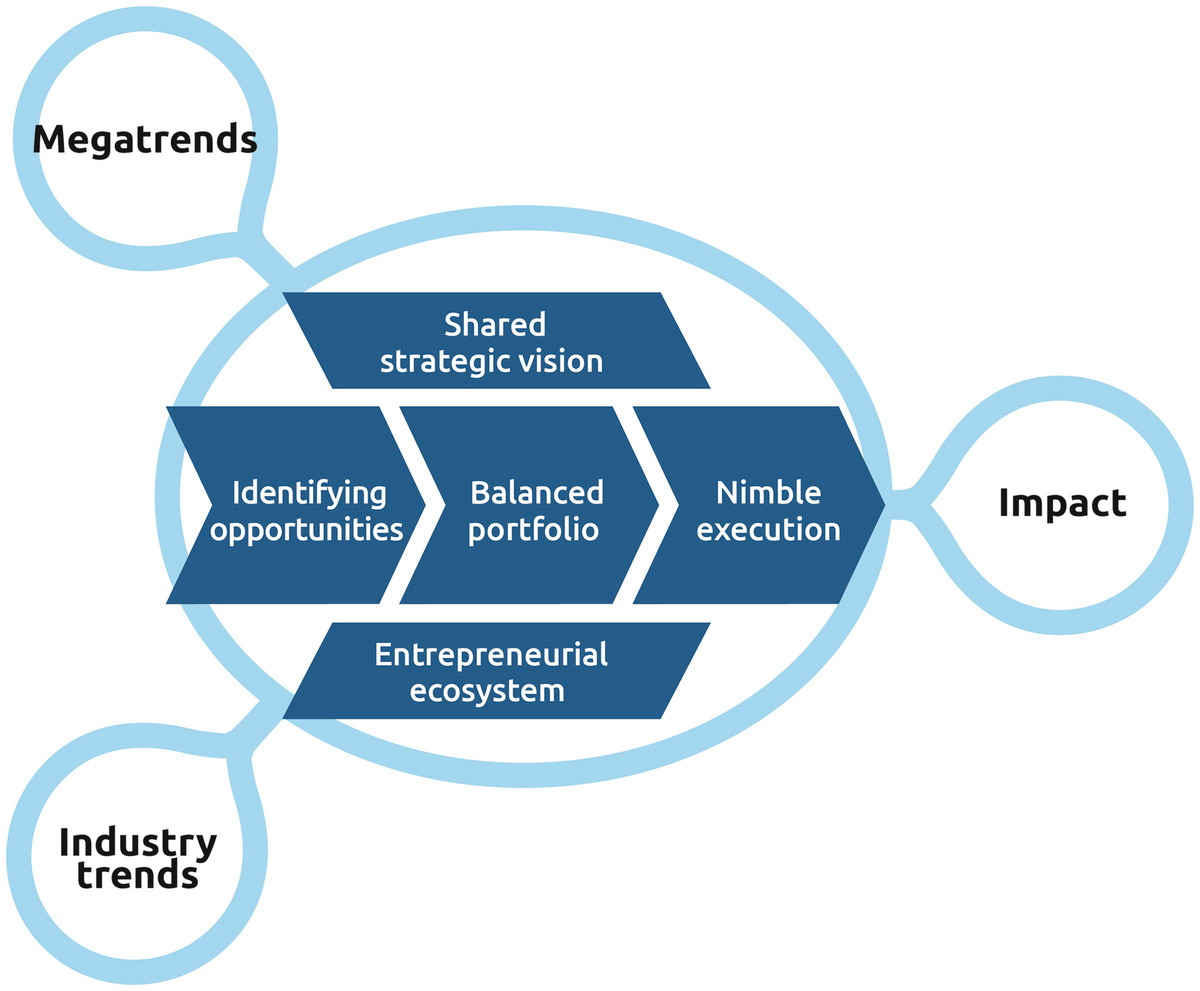1. Introduction: Make Sense of Innovation
Innovation is today on top of the agenda of managers, entrepreneurs and policymakers . It is an opportunity to develop and grow new business models but also a threat to existing ones. It is also a societal challenge, as entire professions disappear while new ones are created. Simply ignoring innovation is therefore not an option.
But innovation debates too often seem more like buzzword competitions than rigorous management thinking. From digital transformation to industry 4.0 , from sustainable business models to crowd-hackathons, managers can get lost in what has often become a confusing maze of ideas, concepts, tools and initiatives.
As a consequence, too many managers, entrepreneurs and policymakers still live and think in innovation wonderland, a place where great opportunities are just an ideation workshop away, where spending more on R&D or creativity sessions is the key to success, where crowds always have wisdom and where being the first to invent is always the winning option.
But in the real world of innovation, opportunities must be hunted and matured, distinctive innovation management capabilities must be developed and tough strategic choices regarding innovations must be made. Being a very creative business is one thing; successfully managing innovations is another.
The key to innovation success is to do much more than generate ideas. The key to innovation success is to have an organization capable of effectively identifying, prioritizing and capturing innovation opportunities , in line with its strategy and ecosystem . The key to innovation success is therefore more brain and less storming.
Combining rigorous concepts and hands-on experience, this guide will help you find your way through the innovation maze. It will help you ask the right questions and equip you with the right approaches and insights, thus empowering you to find the answers that will work for your organization .
These questions, approaches and insights are organized according to the five key challenges of successful innovation management:
Build a shared strategic vision of innovation
Manage entrepreneurial ecosystems
Identify attractive innovation opportunities
Develop a balanced portfolio of business models
Nimble execution : fail fast and win big
Welcome to the real world of innovation. Fasten your seat belt and enjoy the journey!
2. Build a Shared Strategic Vision of Innovation
Innovation is today seen by many organizations as a key strategic issue. These organizations, however, often embark on costly innovation initiatives, without having any clear idea of what they want to achieve (thus they are inefficient) or why (thus they are ineffective). Too often, they do not understand or do not agree on what innovation is or why and how they want to innovate.
The first challenge of innovation management is therefore to develop a shared strategic vision of innovation: why a firm must proactively manage innovation, what innovation actually means as a business, how it unfolds as a process, what are the different types of innovation, what are the resulting strategic options and what should drive the decision- making regarding those options (Fig. ).
Fig. 2.1
Building a shared strategic vision
2.1 Why It Matters: Innovation Management Capabilities
Innovations have occurred and endured for thousands of years. Fire, boats, pottery, irrigation, agriculture, wheels, writing and dozens of other technological breakthroughs have changed humanity. In recent centuries, major waves of innovation such as mechanization, steam, steel and railroads, electricity and the combustion engine, petrochemicals and electronics have led to industrial revolutions . Each time, organizations , institutions and societies had to learn how to adapt to them.
What has changed in recent decades is that innovation has evolved from an exceptional event to the new normal. In the past, most firms could cope with innovation as an occasional shock. They enjoyed periods of reasonably stable equilibrium between those shocks. Today, global and industry trends force firms to constantly make decisions regarding existing and emerging innovations. Innovation has to be on the strategic agenda of every firm, and the ability to deal with innovation has become critical (Fig. ).
Fig. 2.2
Developing innovation management capabilities
Key Insights (detailed in following sections)
- i.
Megatrends such as technology disruptions , international competition and sustainability affect firms across all sectors and industries, creating new competitive and social challenges .
- ii.
Industries and sectors are also disrupted by new regulations , new customer needs and new technologies , forcing firms to reconsider the sustainability of their assets and activities.
- iii.
Small and large firms across sectors must place innovation among their strategic priorities if they do not want to suffer the fate of the dinosaurs.
- iv.
This implies developing innovation management capabilities to identify, select and capture the right innovation opportunities , in line with the firms ecosystem and strategy.
2.1.1 Megatrends: Beyond Hi-Tech
While in the past only the so-called hi-tech sectors were considered innovation intensive, today firms across all sectors are affected by global trends that force them to place innovation on their strategic agenda . Today, managers (still) try to build immortal firms in mortal markets (N. Dew) and many employees want lifelong job security, but most firms are bound to suffer the consequences of creative destruction .
Among the global firms that were in the worlds top ten (in terms of valuation) in 2000, only one (Exxon) was worth more in 2015 than in 2000. Decades-old household names such as Kodak , Black & Decker , Blackberry and General Motors have disappeared, struggled or faced bankruptcy. One of the oldest firms in the world, Kongo Gumi , a Japanese hotel that opened in 576 and survived countless earthquakes, revolutions and wars, went bankrupt in 2006.
2.1.1.1 High-Speed Innovations
There are three global innovation-related trends that affect firms across industries. The first one is the accelerating pace of technological development. While technologies have evolved since prehistoric humans made the first tools, the speed at which new technologies now revolutionize entire sectors is unprecedented . The innovation crisis mode is no longer a temporary disequilibrium; it is the new equilibrium.
ICT technologies (new software and algorithms, new datasets, new devices and infrastructures) force all firms to consider how to improve their existing business model , whether to develop new ones, and how to best manage their data and information. Technological innovations such as blockchains , new sensors, new material, drones or additive manufacturing also raise questions across traditional industry boundaries.

